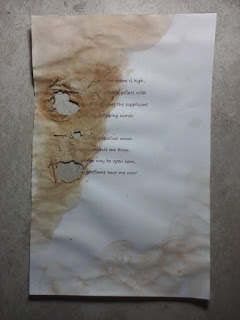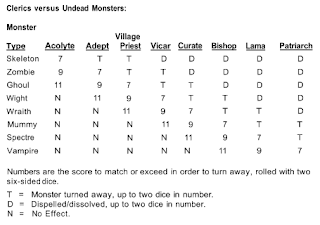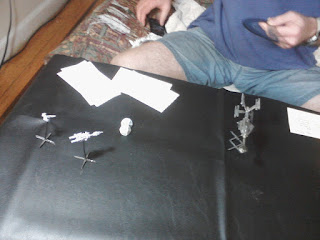Back in the day, TSR's espionage game
Top Secret was, I think the second RPG I ever got after D&D. Mostly this was just due to its release date as I became aware of RPGs, and possibly the modern setting. I was a complete blank slate about the spy/espionage genre, and frankly I think I played/admin'd the game very, very badly indeed. At some point I boxed it up and it's probably the most rarely-looked-at game that I own.
Well, about a month ago the Hulu online TV service got rights to play most of the original James Bond movies, and during lunch breaks I started to watch them, for the first time ever, in the original chronology. I'd say it's delightfully loopy. The young Sean Connery is truly a pleasure just to watch move around a room. And the gestures in these movies echo throughout all later action and superhero movies and comics, so I feel a lot more learned about all those references now. And of course I was prompted to open up
Top Secret again and view it through more informed eyes about the genre expectations. (One thing about the old games: they assumed that you had intimate knowledge of the outside genre, and in many cases gave pretty naked mechanics for these things they assumed you could recognize by name.)
One thing that's attractive is the dictum: "Unlike many role-playing games, TOP SECRET games are best with a smaller number of players... the simple, straightforward missions are ideally suited to a minimum of players; the Admin, of course, and perhaps one or two agents." (p. 4). Particularly so that I've been doing a lot of solo play at the request of my partner Isabelle lately; and this is again something that was very bent, in the opposite direction, when I played the game as a teenager with my D&D buddies. So then I opened up the sample adventure module (really a mini-campaign setting),
Operation: Sprechenhaltestelle by game creator Merle Rasmussen, for more guidance on how to design an espionage RPG mission.
A few things: The map of the small European city is very clean and attractive, even while giving a very dense amount of content and places to explore. The format is the same as D&D Module B1:
In Search of the Unknown -- locations are described with dressing, and then space is given to add extra unique characters and treasures from a list at the back of the module. The first four pages of introductory advice are in fact mostly copied from the B1 text and lightly altered for the modern-day espionage setting (it even talks about "order of march", etc.). The group size is somewhat larger than the core rules indicate; party size is likely four or more characters (bolstered by NPCs if needed).
I count almost 120 characters pre-stocked in the setting. Somewhat awkwardly, none are given names (which seems a bit against type; in the 007 films among the most important highlights is revealing the outrageous names of the characters, with the single best-known catchphrase of course being "Bond, James Bond"; but this could be due to space limitations in the publication). Characters each have a "Personnel Code"which keys to a big table at the back of the module with ability scores, skills, languages, contacts, secrets, and weapons.
The thing that mystified me is that the Personnel Codes have a prefix which is clearly non-random, but is not given any clear definition in the module itself. For example: there are characters A1 to A11; B1 to B6; C1-23, then C143, C144, C210, CC; D1-4; G1-7; L1 and R1; S1-21, followed by S72, S120, S0, and SS14; U01 to U15; W1 to W3 and WS1; X1 to X9; Y1 and Y2; HC, HD, HS0, NS0, WCS, Z1, and Z2. These NPCs are scattered throughout the setting, and don't not appear together in any recognizable way; for example, the Hotel includes characters C4, C5, C18, C143, C144, HS0, HC, HD, S2, S3, and NS0. I flipped through the book more than once trying to find an explanation for these seemingly-important prefixes.
Fortunately, I was able to get in touch with the creator, Merle Rasmussen, on Facebook, and he most graciously answered my question about it. He wrote:
Thanks
for the question. I had to go find a 35 year old copy of OPERATION:
SPRECHENHALTESTELLE. For A, B, and S, I cannot remember any underlying
meaning to the Personnel Code Prefixes. CC refers to Cafe Cook which may
have been added after the C codes were
assigned. WCS refers to Homicidal Wino, but the underlying meaning
escapes me. Although I cannot find UU, I am guessing the U stands for
"Underground." B seems to stand for "Busboy, Barber, Beautician, and
Butcher" G seems to stand for "Guard." Someone with more time may be
able to figure out a pattern. Sorry to be so obtuse.
Of course, I don't that's obtuse at all, in fact very helpful (and quite beyond what some would do to actually look up the reference in a work they published 35 years ago). This at least indicates that the prefixes are mostly job categories, and not necessarily, say, faction alliances or something like that.
And this does given us a Rosetta Stone to start decoding those Personnel Codes. Looking at the Hotel area, for example (area 1. in the adventure), the hotel staff seem to mostly have the "H" prefix, while others must be guests -- HS0 is the hotel switchboard operator, HC the hotel cook, HD the hotel dishwasher, NS0 the nighttime switchboard operator, C5 the front-desk clerk. In the outdoor Cafe (area 3) -- CC is the cafe cook, W1 and W2 are waitresses, while C7 and R1 are waiters, B1 a busboy, and WS1 a wine steward. On the other hand, there's a sniper on a rooftop with personnel code of B6 (definitely not a busboy). So there are some suggestive patterns, but it's not totally consistent.
Is there any other decryption that you can accomplish on the
Sprechenhaltestelle Personnel Codes?
Edit: More here.

















































